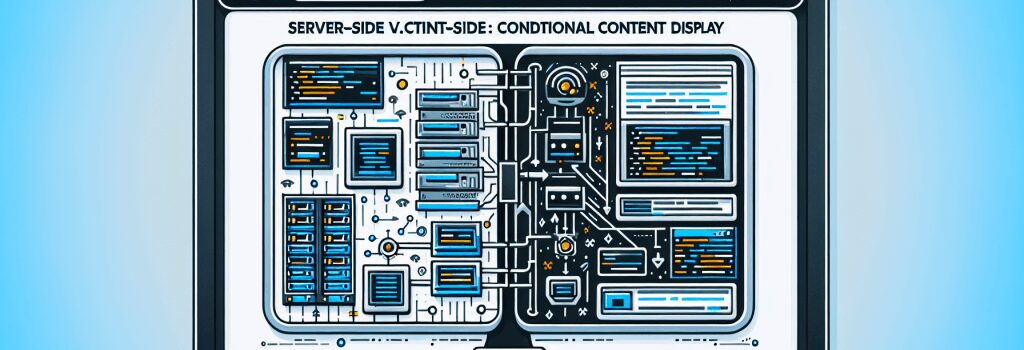Server-Side vs. Client-Side Rendering: Conditional Content Display

Introduction
Regardless of the type of website you’re building, one of the most crucial decisions you will make as a web developer involves the rendering method: Server-Side Rendering (SSR) and Client-Side Rendering (CSR). This decision is crucial as it will influence the way the requested web content is displayed in the browser, and also how you handle conditional content display.
Understanding Server-Side Rendering (SSR)
Server-Side Rendering, or SSR, is the traditional method of web development. During this process, when a user sends a request, the server generates a full HTML page and sends it back to the client. Users will see a ‘loading’ message while the server processes the entire page.
The Role of SSR in Conditional Content Display
In the context of conditional content display, developers execute their logic on the server depending on factors such as user roles or user actions. This entails loading different HTML content.
Benefits of Using SSR for Conditional Content Display
One significant advantage of SSR is that it’s excellent for SEO, as search engine crawlers receive fully rendered HTML pages, thus improving the website’s visibility. Furthermore, the initial page load is typically faster since the browser is given a fully rendered page. This leads to a better user experience, which is a key priority in web development.
Understanding Client-Side Rendering (CSR)
In contrast to SSR, Client-Side Rendering (CSR) involves rendering the web page directly in the client’s browser by using JavaScript. The server sends a response to a user’s request, followed by the browser running the JavaScript and generating the HTML of the page.
The Role of CSR in Conditional Content Display
When using CSR, the conditional content is controlled by JavaScript running in the client’s browser. This means developers can adjust what content is displayed in real-time without requiring a server trip.
Advantages of Using CSR for Conditional Content Display
CSR can offer a more fluid user experience when employed properly, as it allows for specific portions of pages to be updated without requiring a complete refresh. Users could potentially interact with other parts of the webpage while waiting for slower content to be rendered, as long as the rendering process doesn’t block user interaction.
Conclusion: Choosing Between SSR and CSR
The choice between Server-Side Rendering (SSR) and Client-Side Rendering (CSR) depends largely on the specifics of the project. If SEO and faster initial page load are your priorities, SSR might be the way to go. On the other hand, if your website is highly interactive with real-time data and you want to provide a smoother user experience, CSR could be your choice.
In many modern applications, developers opt for a mix of both Server-Side Rendering and Client-Side Rendering, often called Universal Rendering or Isomorphic Rendering. This allows developers to take advantage of the benefits of both methods, enhancing the overall user experience and site performance.
Understanding these concepts and the role they play in conditional content display is a critical step in mastering web development, providing you with the tools you need to effectively manipulate your HTML content dynamically.


